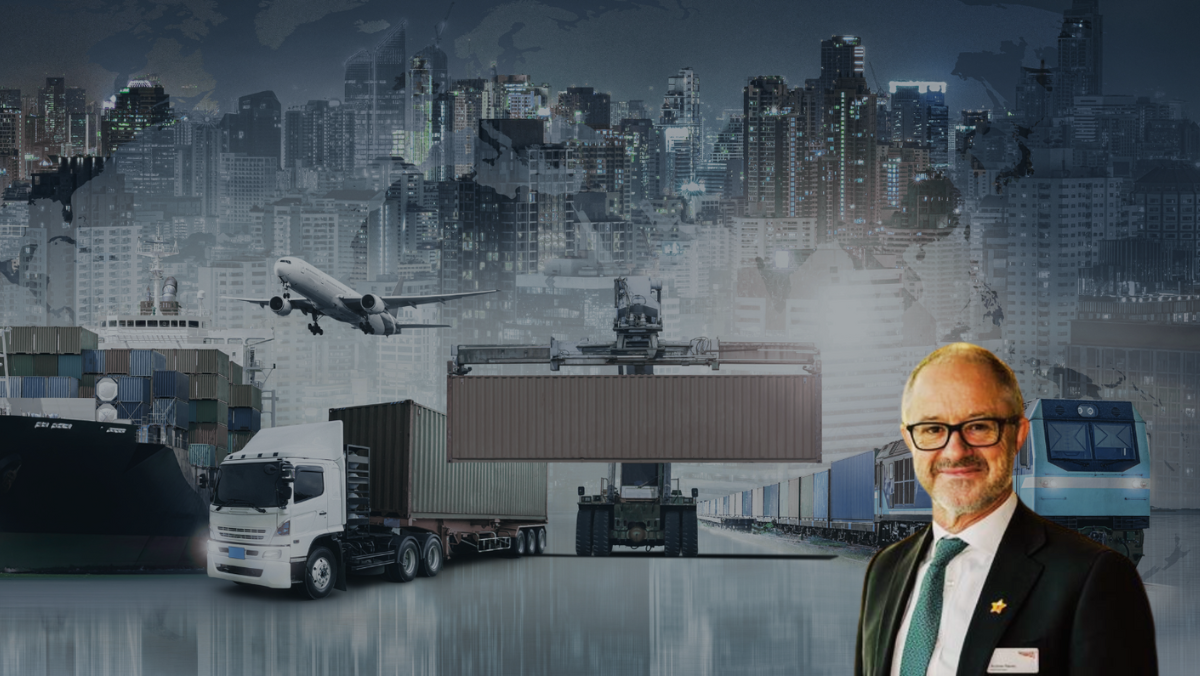
Andrew reflects on how the UK rail sector is navigating transformation, AI, and sustainability in a rapidly evolving world. In this Q&A, Andrew shares honest perspectives on infrastructure resilience, climate adaptation, and the implications of digital disruption.
What’s been the most transformative change you’ve witnessed during your time in the rail sector?
The most transformative shift has undoubtedly been the dramatic increase in demand for rail travel. When I started in the sector, the railway was in a long-term state of decline, passenger numbers were falling almost continuously from the 1920s through to the early 1990s. What we’ve seen since then, driven by population growth and a broader economic transition to service-based city centre activity, is an explosion in passenger numbers. The system we inherited was not designed for that reversal; it was geared towards managed attrition. That disconnect between the legacy design and current demands has been a defining challenge, and a reminder of how dangerous it is to plan the future based solely on the past.
What do you see as the most pressing sustainability challenge in your area of the sector, and how are you responding?
Heavy rail is intrinsically capital intensive, electrifying lines, building new routes, or renewing rolling stock comes with enormous cost. Our challenge is to align long-term sustainability goals with that economic reality. Once you procure a new train, for instance, it’s a 30-year investment. Making the wrong call can actually be damaging from a sustainability standpoint if it means replacing assets prematurely. We’ve seen the hype cycle, hydrogen was 'the future' a few years ago, but that’s faded due to issues around pressurised storage and scalability. Battery technology now looks more viable. The bigger issue is the industry’s agility, or lack thereof. We're structurally slow to respond, and that puts us at risk of falling behind. Additionally, climate change is already having a material impact. It’s not that we’re seeing unprecedented levels of rain, but we’re seeing far more frequent and intense rainfall events that our ageing drainage infrastructure wasn’t built for. Retrofitting to cope with these patterns is a colossal task, and it’s going to take decades.
How do you balance commercial performance with the long-term imperative to become a more sustainable business?
Sustainability without economic viability isn’t sustainable. It’s as simple as that. We are accountable for spending public money wisely, and that sometimes means pushing back against politically driven timelines that ignore technical or economic realities. A good example is the target to move our road vehicle fleet to fully electric by 2027. Half of those vehicles currently don’t have an electric substitute, and the cost of conversion would run to hundreds of millions. It's not that we disagree with the goal, it’s the lack of commercially viable infrastructure and the absence of supporting market readiness that makes it problematic. Similarly, with electrification projects like Great Western, cost overruns in the past have undermined future business cases. That’s why we’re investing heavily in reducing the unit cost of electrification, we can’t afford to green the economy by spending recklessly. The challenge is to align values with financial rigour, not pretend they’re separable.
Where is AI already changing the game in your organisation or the wider sector—and what excites or concerns you most about what’s next?
AI's potential in the railway is enormous, but it's also full of unresolved questions. We're using data analytics and predictive models to optimise maintenance and keep the network open longer, in fact we’re currently launching a major procurement for next-generation infrastructure monitoring that invites suppliers to propose their own AI-enabled solutions rather than prescribing the tech ourselves. But the big gamechanger would be using AI to reimagine the planning and scheduling of the railway itself, to drive second-by-second reliability rather than relying on 15-minute averages. The sticking point is data as the railway is a highly secure, closed system and to unlock AI’s full value, we’d have to provide far greater access to sensitive data, and with cyber threats constantly evolving, that's a major policy and security challenge. I'm also deeply interested in AI's ability to simplify and streamline our IT infrastructure, replacing millions of lines of bespoke code with far more adaptive and intelligent systems. But again, we need to move carefully, once you open that box, you can’t shut it again.
Looking ahead to 2030, what single shift do you think will most define the future of transportation and why?
That’s a tough one, especially because transportation is so broad. In rail, I think we’ve not yet fully grappled with how AI and always-on connectivity are changing the way passengers interact with transport. Mobility as a Service has been a buzzword for years, but the reality is that our 200-year-old infrastructure isn’t built to support seamless multimodal innovation. We’re still running steel wheels on steel rails. My hope is that we can use AI to better align the system with passenger behaviour and expectations, but the biggest challenge will be cultural and political. We need the courage to share data responsibly and a willingness to experiment without prescribing every technical detail in advance. If we get that right, AI could help us extract far more capacity and resilience from the infrastructure we already have.
